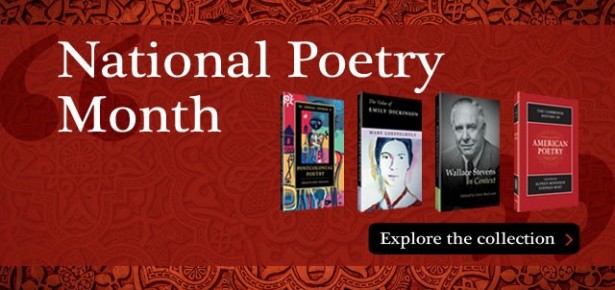
It seems only fitting at the start of National Poetry Month to think about what the art form that it celebrates might offer us at this moment in 2017. Two key figures in the last 75 years of American poetry – they feature prominently but also somewhat controversially (more on that below) in The Cambridge Companion to American Poetry since 1945 – have set particularly high stakes for the practice.
”History is a record of survivors, Poetry shelters other voices”
When, for example, the poet and scholar Allen Grossman calls poetry “the civilizational means of last recourse” he means that no other art will suffice where the very survival of civilization as such – including persons and the many other living and non-living beings affected by the hospitability (or inhospitability) of our social order – is imperiled. Susan Howe, another poet-scholar of the same generation as Grossman, frames the stakes somewhat differently but also pegs poetry to survivorship, arguing that while “History is a record of survivors, Poetry shelters other voices.” In other words, if for Grossman, poetry is the final resort where all other forms fail in the practice of artistic representation; for Howe, poetry is the art of representing those whom history has failed to represent. For both poets, this representational effort is the work of poetry with a capital “P,” and it spans the entire centuries-long practice.
This Companion devotes an entire chapter to Grossman and Howe — and, as some reviewers of the original book proposal noted with alarm, at the expense of two other major figures from the period, Elizabeth Bishop and James Merrill. But I lobbied hard for a spotlight on these two poets (brilliantly provided by UC Irvine’s Oren Izenberg), because what Grossman and Howe offer is an invaluable framework that not only extends to major figures like Bishop and Merrill, but also helps us understand some of the broader movements of the period, which this Companion locates between the end of World War II and the end of first decade of the 21st century. (PS: For readers interested in learning more about Bishop and Merrill, CUP offers some great resources, including the excellent Cambridge Companion to Elizabeth Bishop and a beautiful chapter on Merrill in The Cambridge History of American Poetry.) Some of the most influential developments in poetic practice during the period – the Black Arts movement, Language writing and (yes) rap – emerge in the volume precisely as last-resort forms of resistance in the face of overwhelming social, political, and aesthetic opposition.
The Cambridge Companion to American Poetry since 1945 ends with a consideration of poets of the “First Decade,” and at the time the book came out, I believed one could in principle continue adding chapters for subsequent decades. But I’m increasingly convinced that the content of the volume now encompasses a distinct period of American poetic production, although whether it might be said to have ended with the outcome of the 2016 US presidential election remains an open question. The stakes of Poetry, at least for now however, are unlikely to change.
Click here to read a free chapter from The Cambridge Companion to American Poetry since 1945, edited by Jennifer Ashton
Celebrate National Poetry Month with Cambridge University Press! Get 20% off this book and a select range of other titles by clicking here
Latest Comments
Have your say!